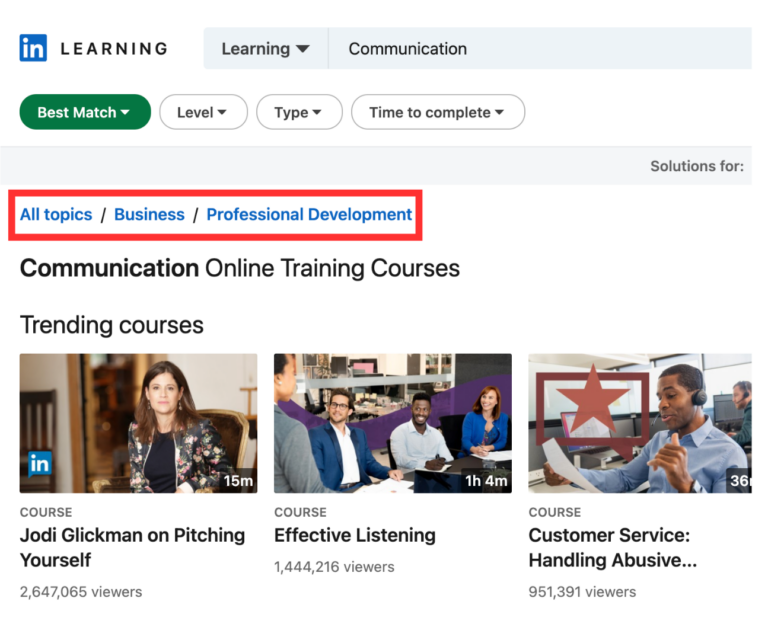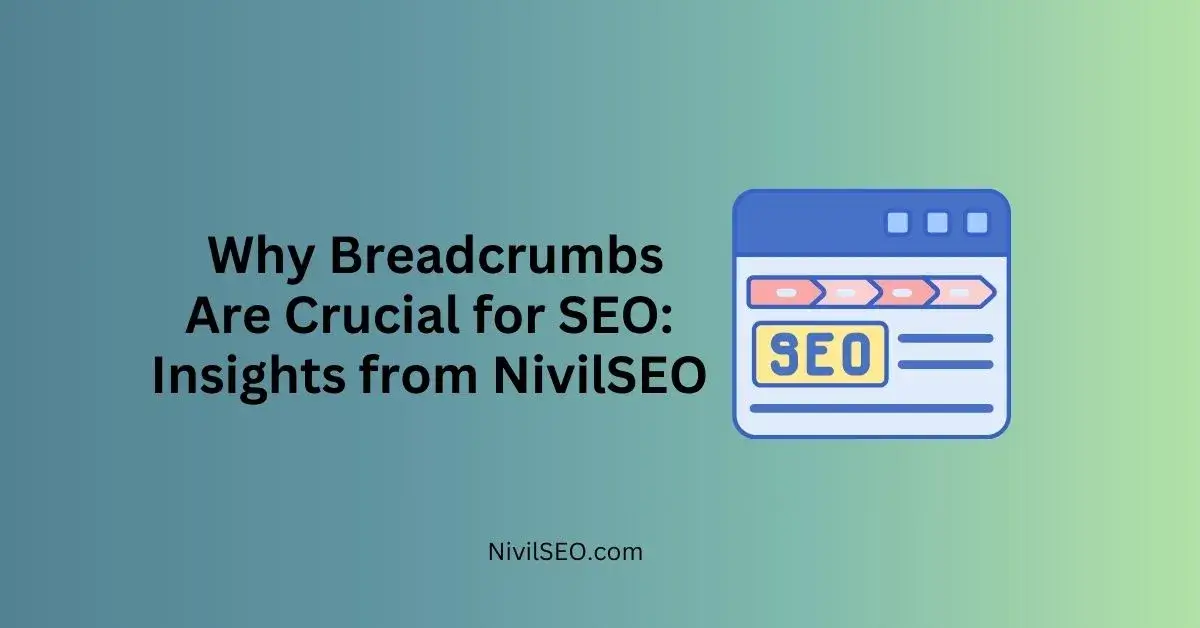You’ve surely seen them on so many websites: those little navigation tracks at the top of a webpage, popularly called “breadcrumbs.” Breadcrumbs: are they merely one of those user-friendly features or do they carry hidden SEO power? Here at NivilSEO, SEO expert Dubai, we believe that breadcrumbs are an important tool for your website visitors and also for the search engines. Let’s dig in to see why breadcrumbs are of importance for SEO and how they can help your website.

What is website breadcrumbs?
Website breadcrumbs Website breadcrumbs are typically placed on top of the page of a website, after the header. They are like breadcrumbs actually, and they’re a visual representation of what level in the hierarchy of the content that the user stands.
As breadcrumbs, they function something like a map-they reveal to the user which path they used in order to arrive at the present page-and every “crumb” is a clickable link to the page that led into the prior page in the hierarchy. For example, on an e-commerce website, breadcrumbs might look like “Home > Clothing > Shoes > Sneakers.”
Role of breadcrumbs in SEO
We explored what website breadcrumbs are and how they function as a user navigation tool. But here at NivilSEO, we’re all about maximizing your website’s potential. So, let’s delve into the world of SEO (Search Engine Optimization) and see Why Breadcrumbs are Important for SEO and how they play a crucial role.
- Improved Website Structure & Clarity:
- Breadcrumbs visually represent your website’s structure, making it clear to search engines how your pages are organized and interconnected. This helps search engines understand the hierarchy of your content and categorize your website effectively.
- Enhanced User Experience: With clear breadcrumbs offering access to other pages, navigation becomes easy for users. Frustration is reduced while keeping them interested, giving a chance to have longer sessions and lower rates of bounce (users who leave the web after viewing just one page). A positive user experience is a well-known ranking factor for search engines.
- Efficient Crawling & Indexing:
- Breadcrumbs can act as a roadmap for search engine crawlers, guiding them efficiently through your website’s structure and ensuring all your valuable content gets discovered and indexed. This can potentially lead to a more complete website presence in search results.
- Potential for Rich Snippets:
- At other times, breadcrumbs will simply show up in search result SERPs as “rich snippets.” Rich snippets give a user a better preview of your website’s hierarchy and, in theory, could enhance CTRs from the search results.
Different types of breadcrumbs
More than one way of implementing breadcrumbs in your website are available. At NivilSEO, we believe in offering you options to accommodate whatever the need is. Now, let’s explore the different types of breadcrumbs:
- Location-Based Breadcrumbs:
It is the most traditional type and reflects the current location of the user within the hierarchy of the website. For instance: “Home > Products > Electronics > Laptops”
- Attribute-Based Breadcrumbs:
These breadcrumbs are based on product attributes rather than website hierarchy. Let’s say you have an e-commerce clothing store. Attribute-based breadcrumbs may be like this: “Clothing > Shirts > Color: Blue > Size: Large”
- Path-Based Breadcrumbs:
These crumbs show the exact route which an arbitrary user would have needed to take in order to arrive at the current page- dynamic elements and all.. While informative, they can become quite long and cluttered for complex websites.
- History-Based Breadcrumbs:
These breadcrumbs show the user’s browsing history on your website, allowing them to revisit previously viewed pages easily. This can be helpful for websites with a lot of content or complex navigation structures.
Choosing the Right Breadcrumb Type
The best breadcrumb type for your website depends on your specific needs and the structure of your web site. For that reason, here are the guidelines for each of them.
- For most websites, location-based breadcrumbs are a safe and effective choice.
- Attribute-based breadcrumbs can be valuable for e-commerce websites with a wide range of product variations.
- Path-based breadcrumbs might be suitable for smaller websites with simple navigation.
- History-based breadcrumbs can be helpful for websites with a lot of content or complex navigation, but make sure they don’t become overwhelming.
Importance of breadcrumbs in SEO
- Improved Website Structure & Clarity: Breadcrumbs act like a visual map for search engines, showcasing your website’s hierarchy and content organization.This is actually the clarity in which search engines can better recognize and understand your website, thus appropriately categorizing your pages for improved search ranking potential.
- Enhanced User Experience:Right implementation of breadcrumb trail will help a user to understand where he comes from and indicates how to navigate back to the pages the user has visited, making it easier for a user to navigate a website. This reduces frustration and keeps users coming in, probably at a higher level of click-throughs and with lower bounce rates. Happy users can mean better SEO performance since positive user experience is a ranking factor for search engines.
- Efficient Crawling & Indexing: Breadcrumbs can be a guide for the crawlers of a search engine. Thus, if it helps to make an easy path through the structure of your website, then breadcrumbs ensure that all valuable information in your website is easily discovered and indexed. This would lead to a much more robust website presence in search results.
- Potential for Rich Snippets: A breadcrumb might be a good opportunity for rich snippets in SERPs. Rich snippets enable users to get a richer preview of information from your website’s hierarchy, which may further increase CTRs and, subsequently qualified leads to your website.
Ways to put in force breadcrumbs in WordPress
We would now determine the importance of breadcrumbs to both SEO and user experience. Now, how do we add them on your WordPress website? Here in this article, we have come up with two popular ways on how to apply breadcrumbs at NivilSEO.
Method 1: Using a WordPress Plugin
WordPress offers a wide variety of plugins that can simplify the process of adding breadcrumbs to your website. Here’s a general overview of the plugin method:
- Choose a Breadcrumb Plugin: Popular options include Yoast SEO, Breadcrumb NavXT, and WP SEO Breadcrumbs. Each plugin has its personal functions and settings.
- Install and Activate the Plugin: Follow the standard WordPress plugin installation process.
- Configure the Plugin Settings: Each plugin will have its own configuration options. You’ll typically be able to choose the breadcrumb style, separator symbol, and hierarchy display format.
- Save and Test Your Breadcrumbs: Once you’ve configured the settings, save your changes and test the breadcrumbs on your website to ensure they function and display correctly.
Method 2: Manual Implementation with Code
For more control or customization, you can implement breadcrumbs using code snippets directly in your WordPress theme files. NivilSEO recommends consulting a developer for this method if you’re not comfortable with code. However, here is a primary overview:
- Locate Your Theme Files: Access your WordPress theme files through the WordPress dashboard or an FTP client.
- Edit Your Theme’s functions.php File: This file typically contains custom functions for your theme.
- Add Breadcrumb Code Snippet: You’ll need to find and implement a suitable breadcrumb code snippet. Many resources online offer free breadcrumb code snippets for WordPress.
- Customize the Code (Optional): If you’re comfortable with code, you can customize the snippet to match your website’s design and desired functionality.
- Save and Test Your Breadcrumbs: Once you’ve added the code, save the functions.php file and test the breadcrumbs on your website.
NivilSEO: Your Guide to SEO Success
At NvilSEO, we believe a well-structured website that prioritizes user experience is the foundation for strong SEO performance. Breadcrumbs are a simple yet effective tool that can contribute to both.
We’ve provided you with two methods for implementing breadcrumbs on your WordPress website, along with valuable best practices to ensure they function effectively.










